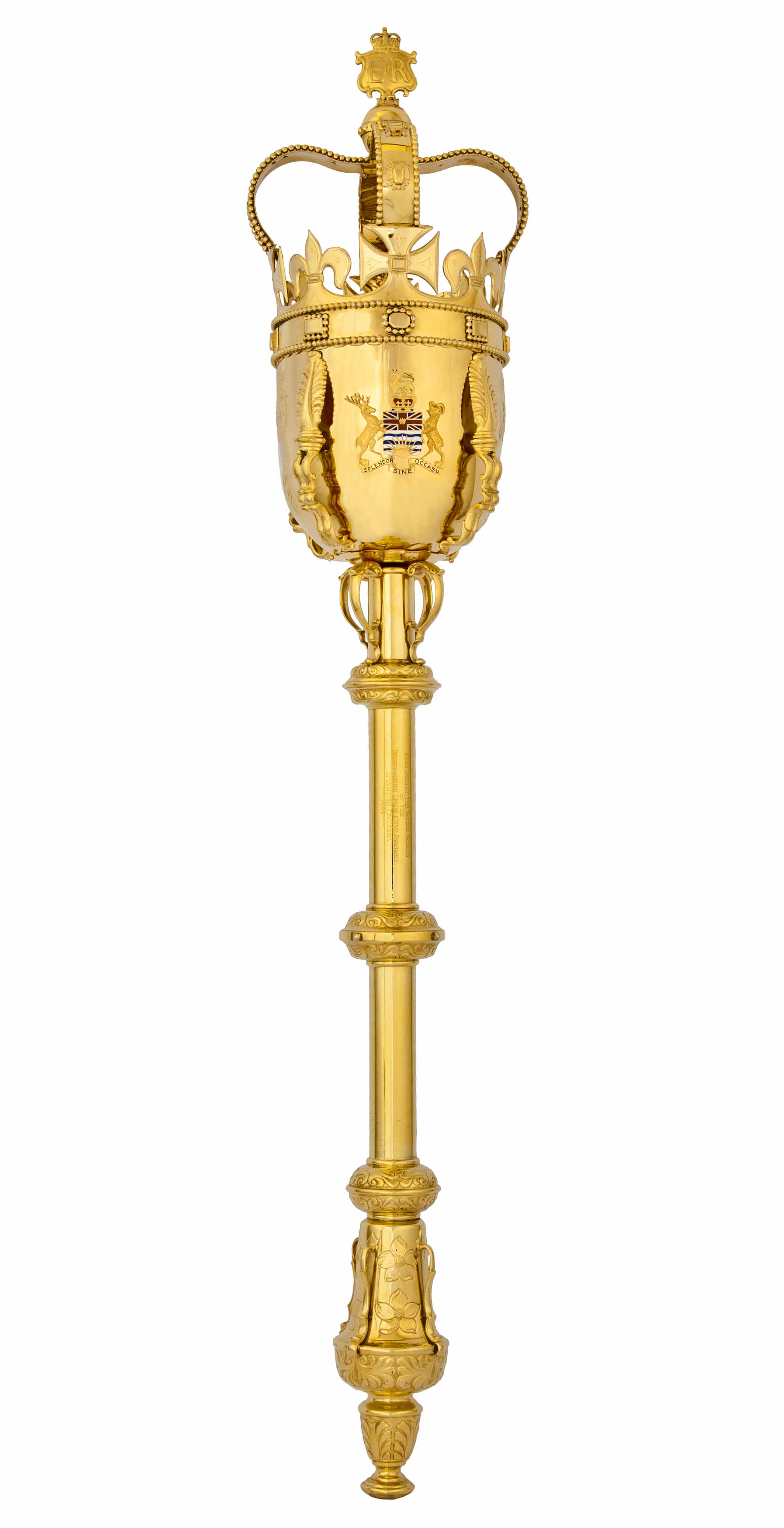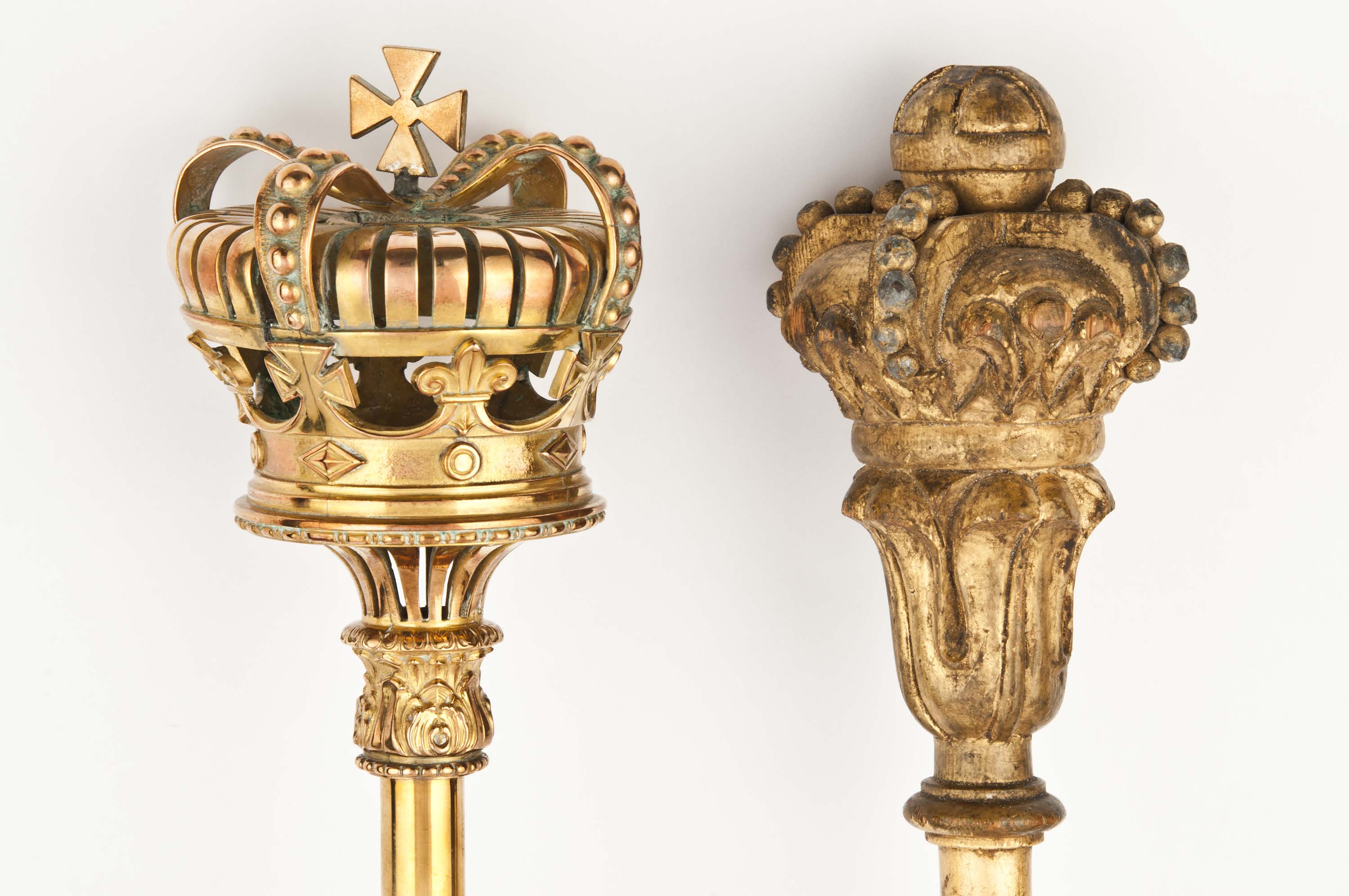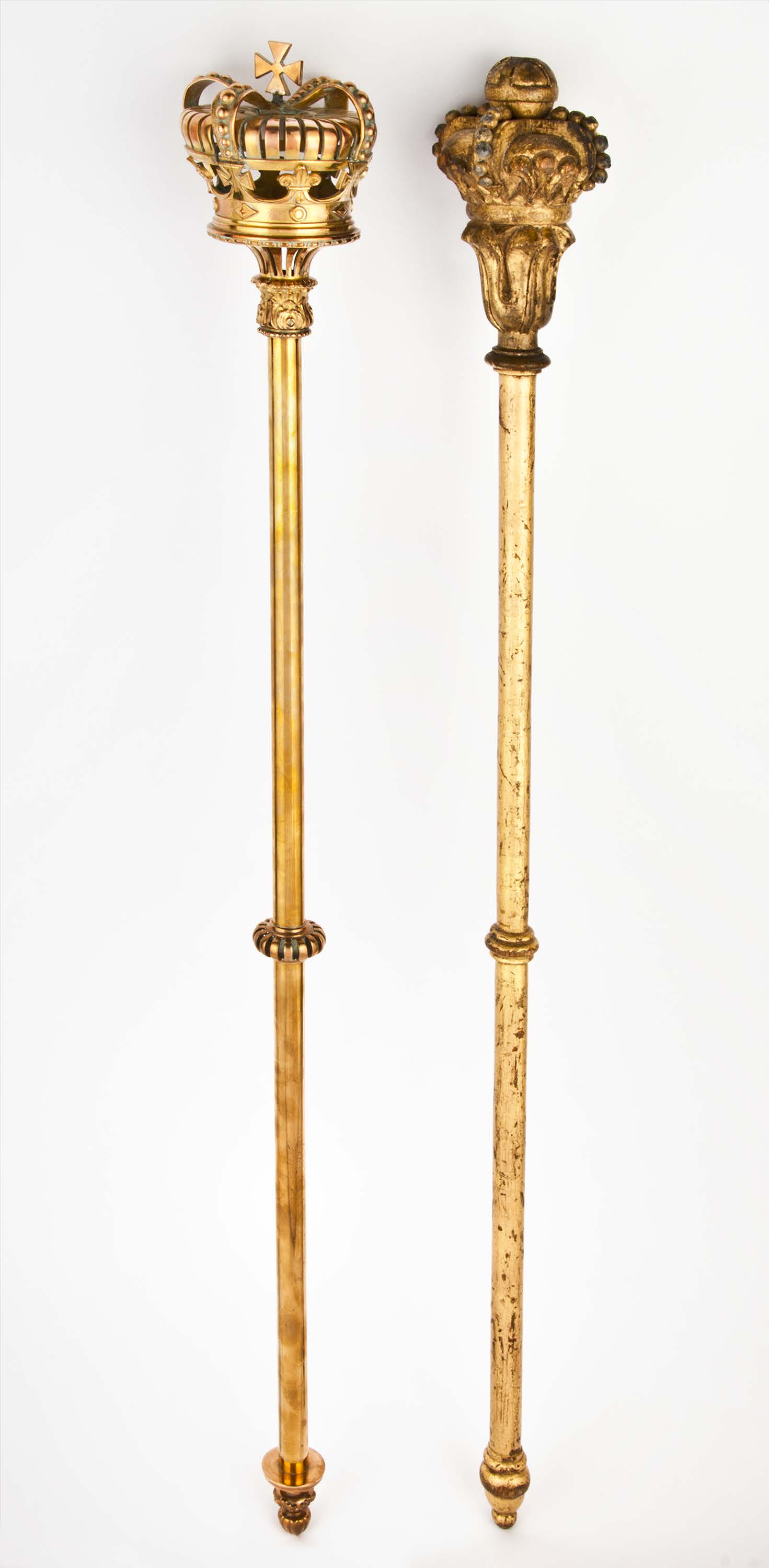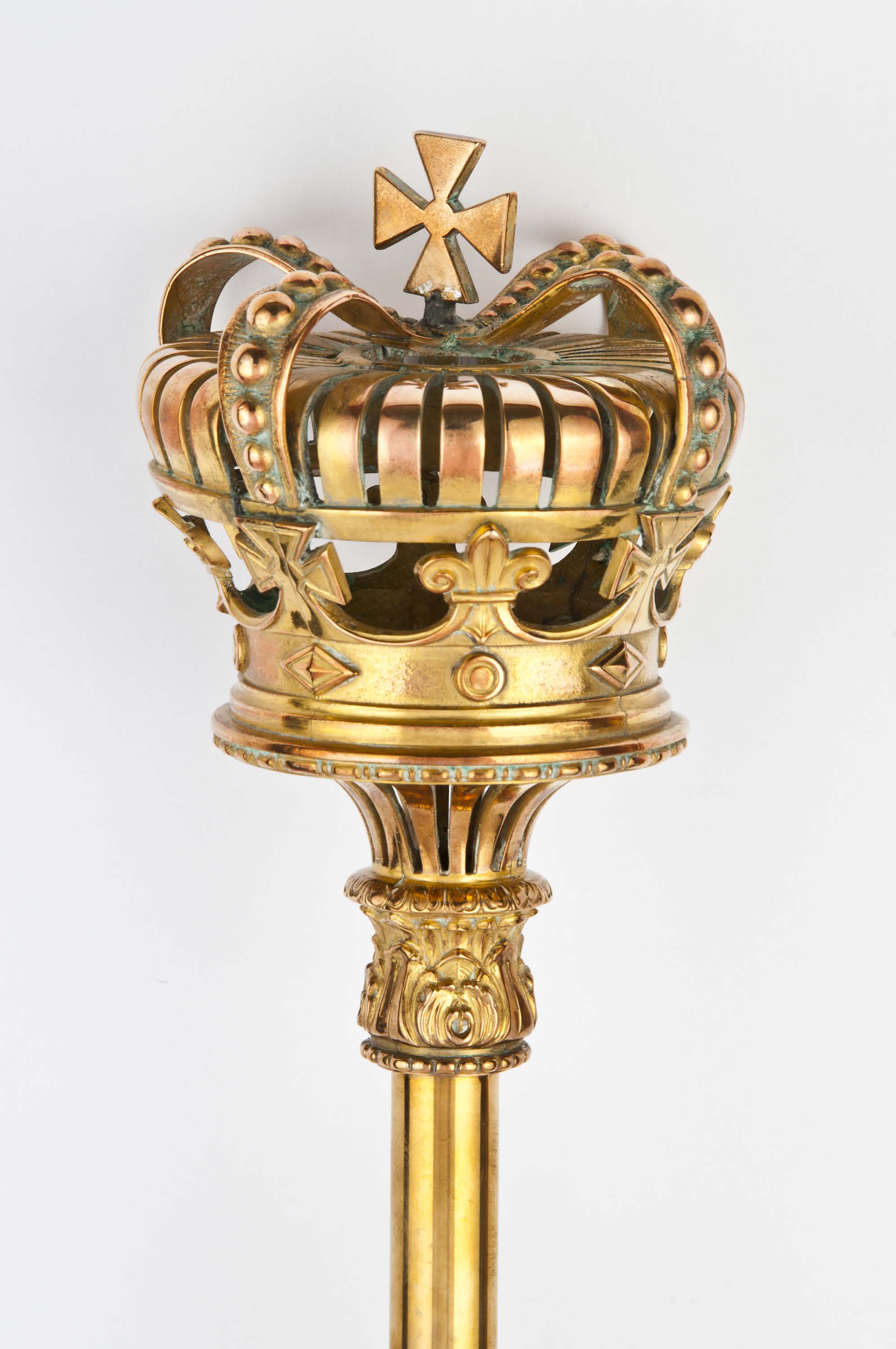The Sergeant-at-Arms is responsible for the care and custody of the mace, and carries it to lead the Speaker in the Speaker’s Procession at the opening and closing of each sitting of the Legislative Assembly. Centuries ago, the mace was the personal weapon of the Sergeant-at-Arms and also their badge of office and authority, displaying the royal insignia to people who could not read. In modern times, the mace has become the symbol of the authority of the Legislative Assembly itself, and it must be present on the Clerks' Table for the Assembly to conduct its business. Its presence signifies that the Assembly is in session, with the Monarch’s full knowledge and consent. It also represents the authority of the Speaker.
When the Assembly is transformed into a Committee of the Whole, the mace is moved to a position below the Clerks' Table in a cradle.
Since British Columbia became a province of Canada in 1871, there have been three successive maces used by the Legislative Assembly. The first was used from 1872 to 1897. It was made by Mr. C. Bunting in gilded, carved wood with a carved crown and Grecian cross. The second mace was first used on February 10, 1898, at the opening of the newly completed Parliament Buildings, and was made of brass by Winslow Bros. of Chicago.
The current mace was adopted on February 16, 1954. It was entirely handmade by Jefferies & Co., Victoria silversmiths from local British Columbia silver. It is plated with 24 carat gold and weighs five kilograms (11 pounds). The traditional design has a long shaft topped by a deep bowl surmounted by a representation of St. Edward’s Crown and the Royal Cipher. The bowl bears the Coats of Arms of Canada and British Columbia and four embossed scenes depicting the province’s forestry, fishing, agriculture and mining industries. These scenes are similar to the murals in the Upper Rotunda of the Parliament Buildings.
On March 22, 2001, the Chamber Supervisor and Sergeant-at-Arms staff member, Donna Masse, became the first women to carry the mace out of the Chamber. This occurred when a sitting was quickly adjourned without the Sergeant-at-Arms present in the Legislative Chamber. In the Sergeant-at-Arms' absence, it was the responsibility of the Chamber Supervisor to lead the Speaker's procession out of the Chamber, and in fulfilling her role, Ms. Masse made parliamentary history!





